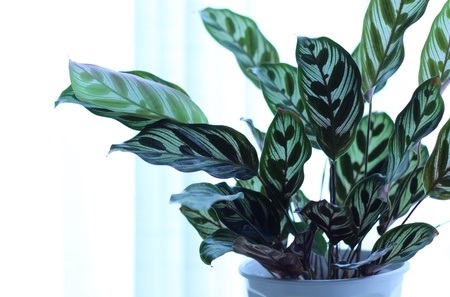





With its somewhat tropical origins, The Peacock Plant is a tall, slender plant that with the right care can become a colorful house plant for your collection.
Due to its Brazilian roots, humidity is best for this particular plant and it loves nothing more than to be misted although it is important to use distilled or rain water as the fluoride can cause damage to the delicate leaves.
How it looks: The Peacock plant has all the elegance and beauty of a Peacock’s tail, which is why it has been given its rather glorious name. The leaves are pale green with a dark green feathered effect from the middle of the leaf to the outer edges.
When new leaves grow they are rolled up and show off their pinkish-red undersides; giving it another splash of color.
Where to display: Not one to be left in direct sunlight, the Peacock Plant should be placed in moderate to low light to avoid the leaves becoming dulled and less vibrant.
Due to the soil needing to be kept moist at all times, it is wise to place your plant somewhere where it can be watered and misted with ease.
Care Level: Due to the Calathea Makoyana requiring the right level of moistness and humidity levels to flourish this may not be the ideal plant for someone who is new to gardening or unsure whether they can keep the temperature and humidity right for this plant to grow.
One tip is to always make sure that you start with healthy plant if you are looking for a top quality species; avoid smaller plants with brown leaves as these may not grow as well as a healthier one.

Copyright © www.100flowers.win Botanic Garden All Rights Reserved